
LiDIA - engine diagnostic solution
Maximise your productivity with LiDIA
Increase overall equipment effectiveness
Reduce costs
Add value to your operations
Decrease carbon print
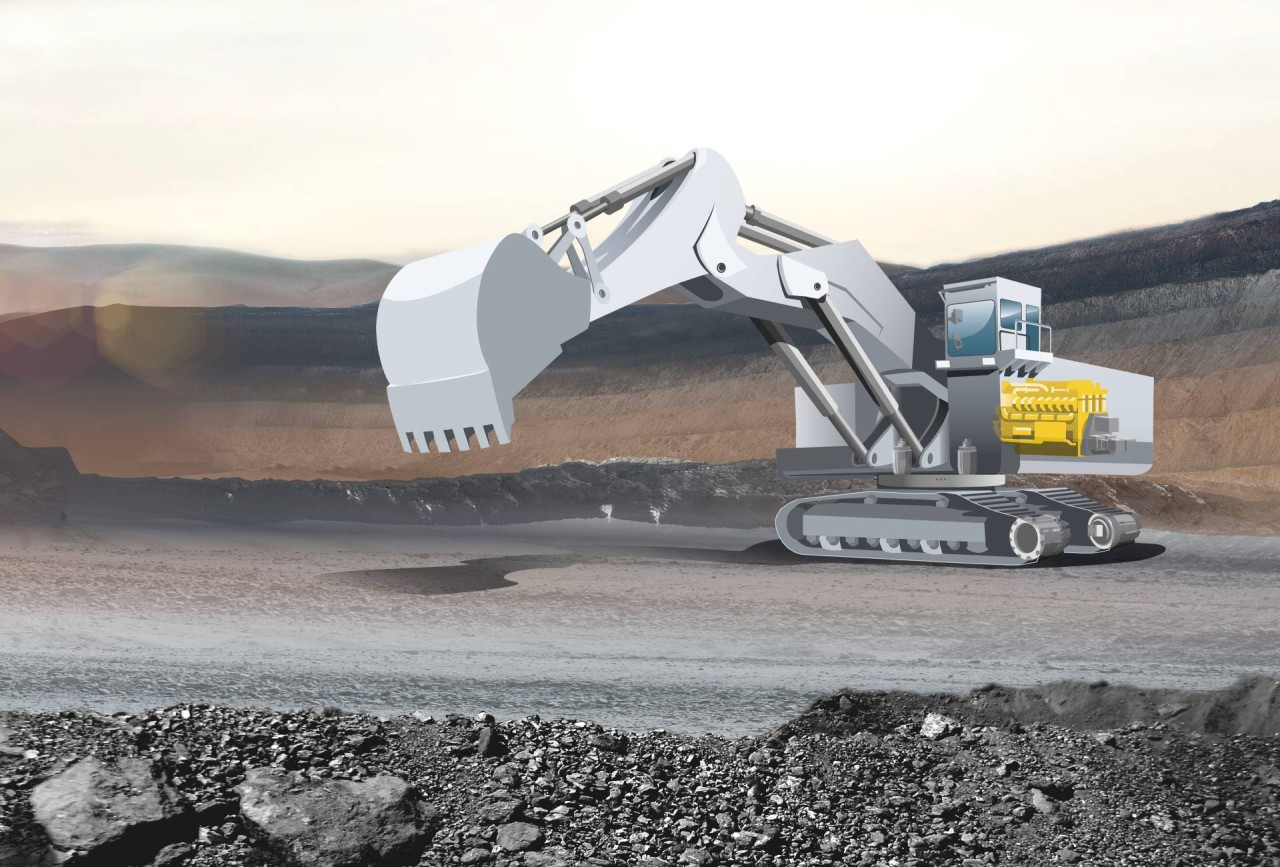
Enhance engine’s health with condition monitoring
Liebherr’s engine condition monitoring provides meaningful insights in form of various Key Performance Indicators (KPI) on the engine’s current health, performance and maintenance; the KPIs can be delivered to a tablet as an application or to the customer’s backend through a web service (API)
How does it work?
Liebherr’s engine condition monitoring collects data to monitor crucial operating parameters such as oil pressure and a counter displaying the remaining hours to an oil change, load profile, fuel consumption analytics, cooling temperature profile, cooling fault indicator, and a counter displaying the remaining hours to an air filter change.
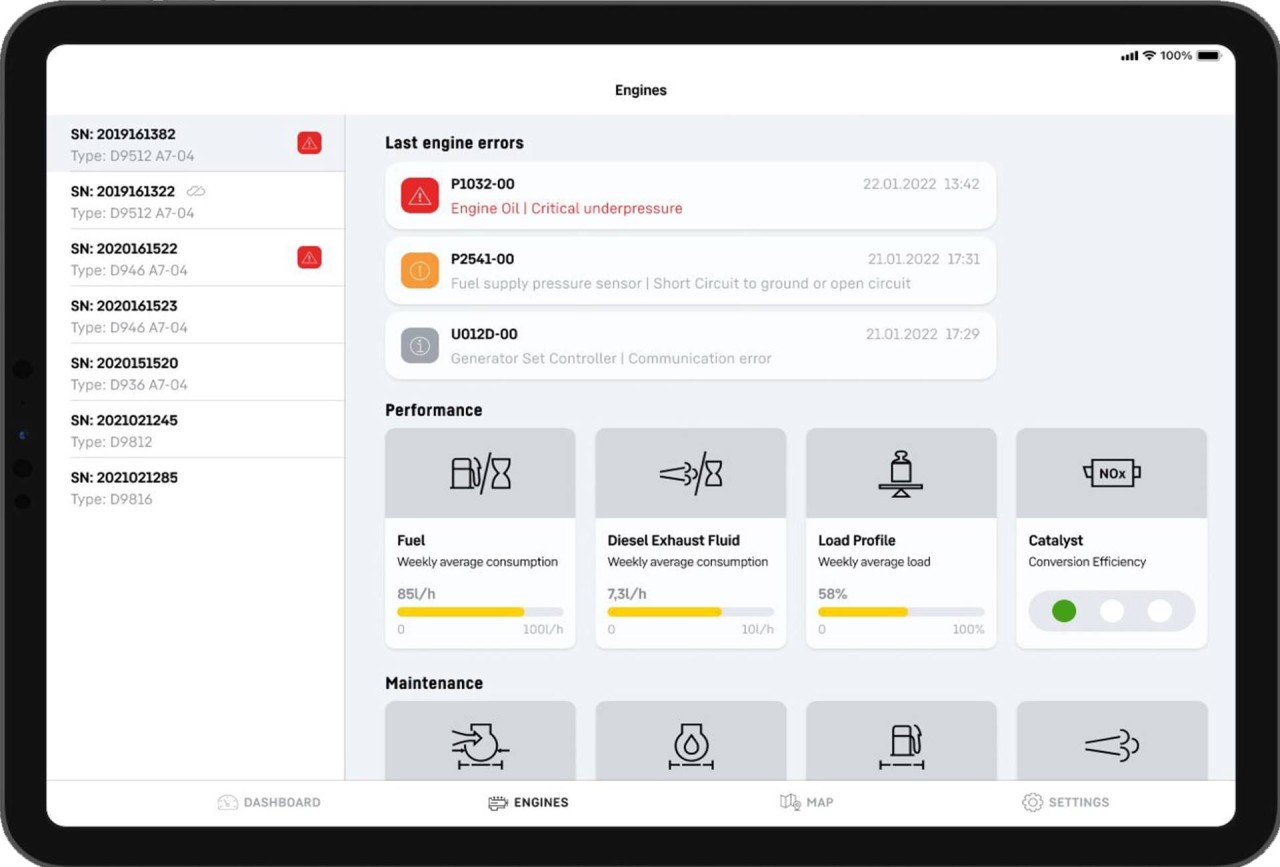
Gain visibility into the real-life status of your engine
Engine condition monitoring allows the user to gain visibility into the real-life status of the equipment in order to plan downtime and repair work more dynamically. The condition monitoring provides the data on the engine’s geo-localisation and delivers live notifications of engine faults. This also helps to reduce overall maintenance costs and allows optimisation of spare part inventory by enabling preventive maintenance based on the engine’s actual needs.

Enhance engine’s condition with LiDIA
LiDIA is an intuitive and user-friendly engine diagnostic solution, which requires no configuration, facillitates access to the engine environment, and reduces the complexity of diagnostic procedures to the essentials. LiDIA offers a rapid overview of all information on the engine system: status, diagnostic trouble codes, active limitations and failure reactions.

Discover LiDIA's functions
- Permanent link to the production server
- Visualisation of subsystems (injection, exhaust gas aftertreatment, etc.)
- Automatic recognition of control devices
- Continuous expansion of functionalities – plug-in based system
- Clear visualization of test sequences in system tests
- Easy production of an ECU protocol
- Management of different roles
- Secured and protected tool
- 24/7 centrale database access

Unlocking the potential: LiDIA's applications across the engine lifecycle
LiDIA was designed for daily within the engine assembly, machine integration to in-use maintenance, troubleshooting, customer service support until remanufacturing, it is all LiDIA, ensuring full diagnostic support across the entire engine lifecylce.
In the extended version, it enables access to a variety of specific diagnostic functions for combustion engines. The focus here was on producing an intuitive user concept. The Snapshot function makes it easy to forward diagnostics data to colleagues in customer services, or to save data for subsequent processing. A core component of LiDIA is the central production database, which will provide direct access to most recent engine firmware releases.
Features that make a difference
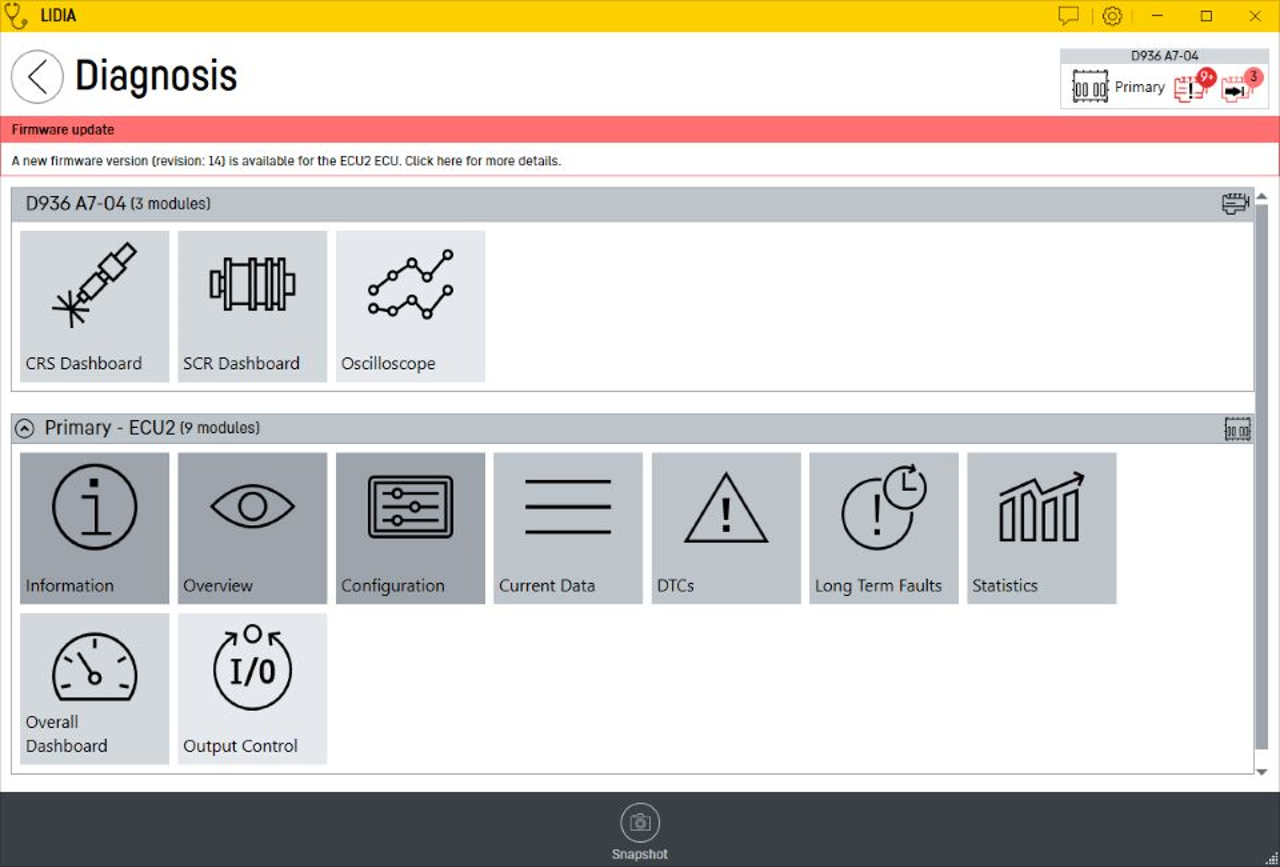
Diagnosis
Retrieve many information, configure your engines and run test routines
Update proposal
Obtain and upload automatically the latest available version of the firmware for the whole system.
Current status
Identify quickly if there are active Diagnosis Trouble Codes (DTC)
Diagnosis Trouble Code
List all errors raised by the embedded software, and get access to help full freeze frame information, guide, references and useful schematics to solve the issue.
Common Rail System Dashboard
Maintenance dashboard, and dedicated routines such as click test, cylinder cut off, etc.
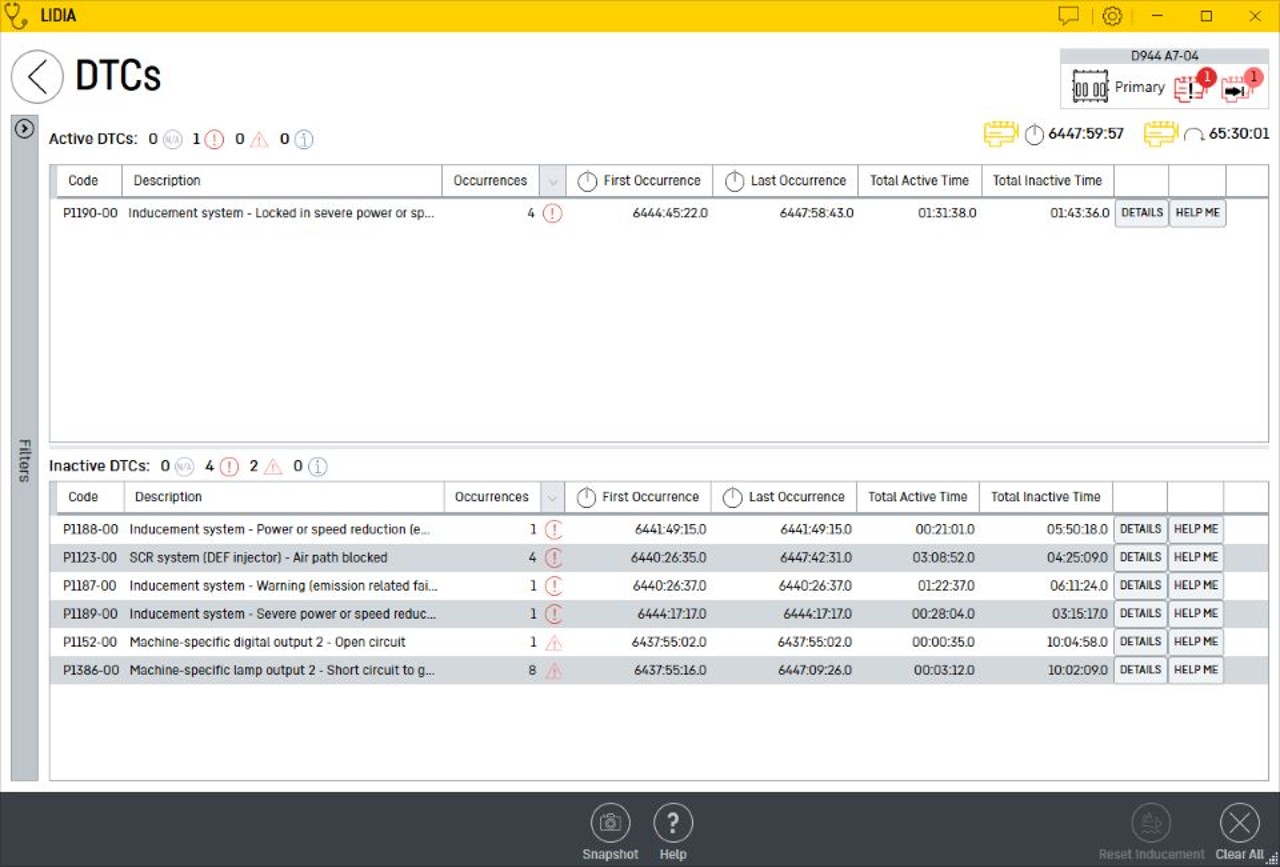
DTC
Diagnosis trouble codes (active and passive DTCs) with corresponding details and help content, such as schematics
Get access to troubleshooting content
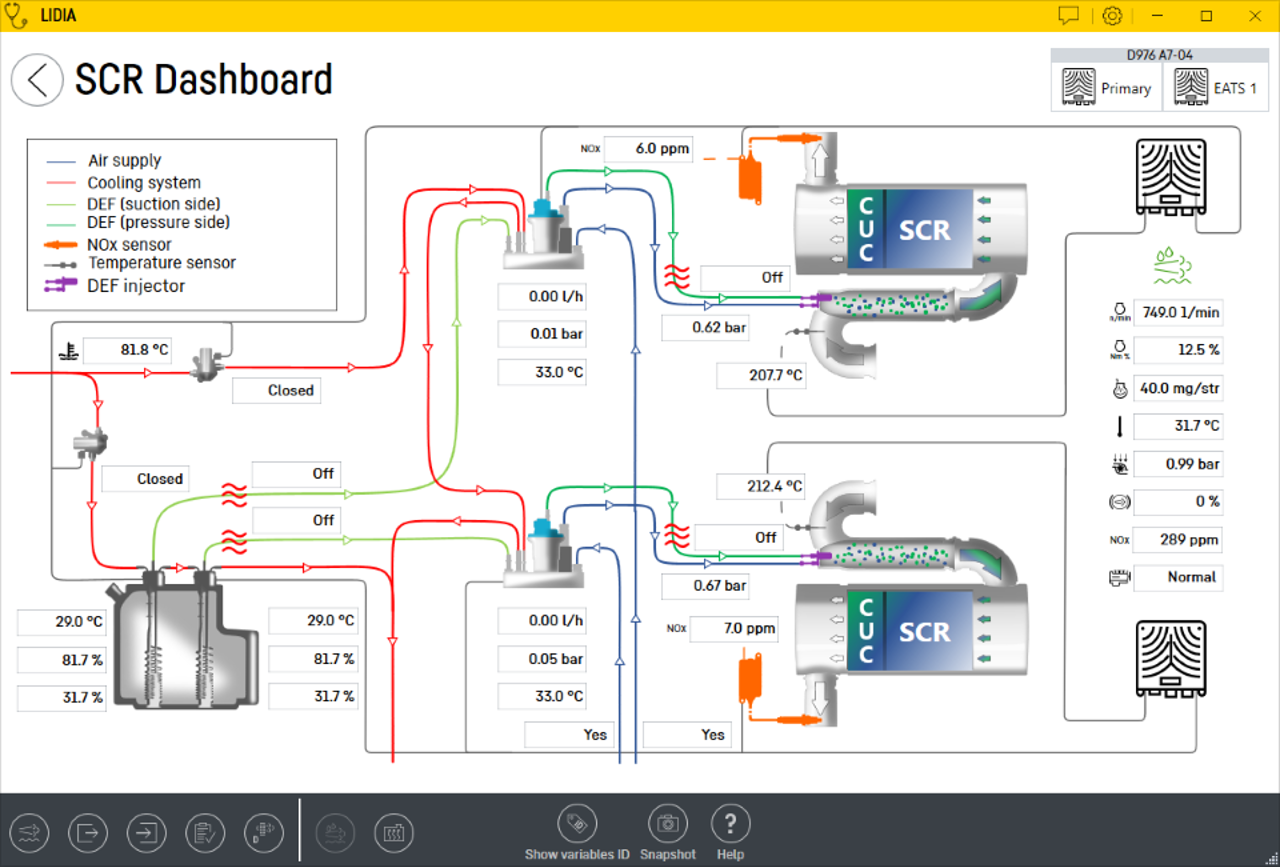
SCR Dashboard
Launch maintenance routines with easy to understand schematics.
Engine After Treatment System Dashboard depending of your configuration.
Get access to maintenance dashboard, and dedicated routines such as Air system check, DEF filling check, Ventilation check, Deposit cleaning, Coolant heating test.
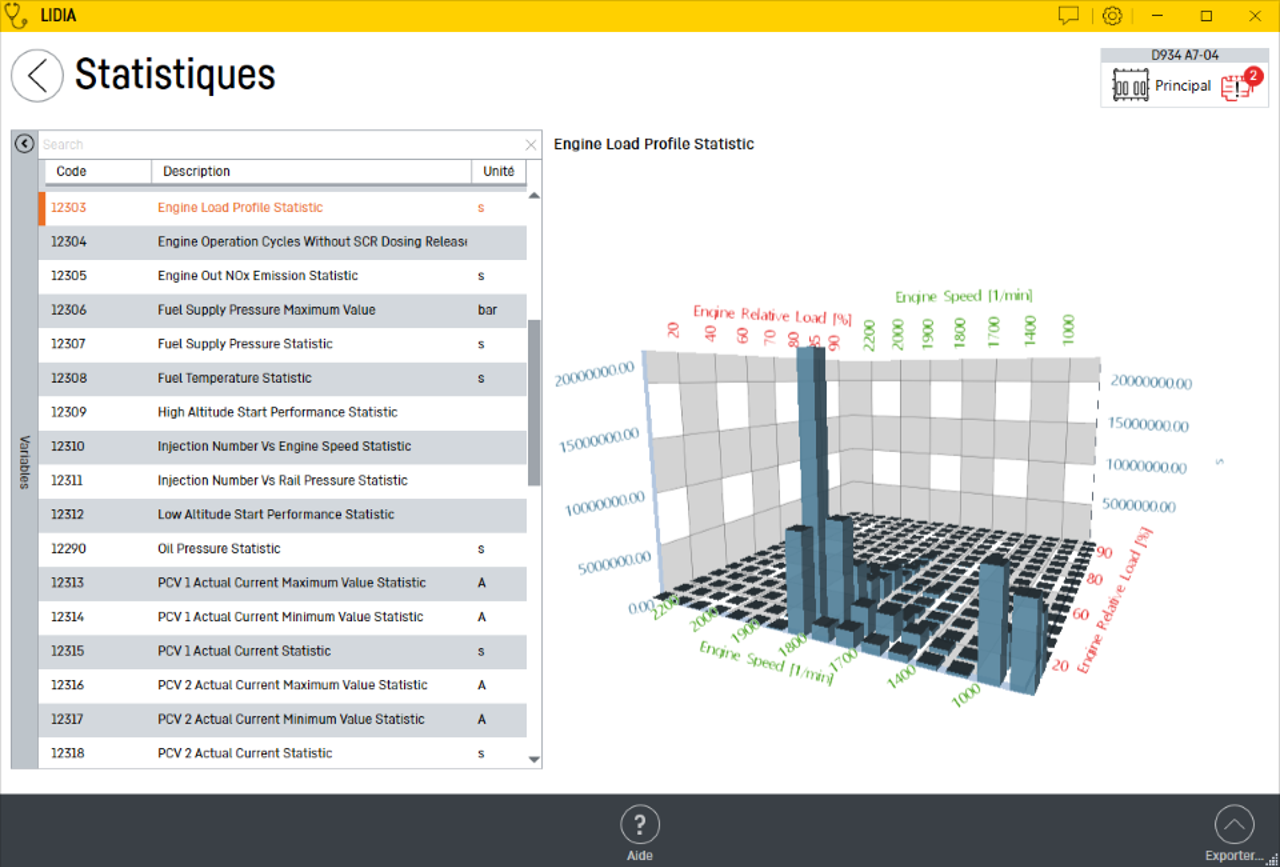
Statistics
1D, 2D and 3D display of statistical data on the system and its components for the entire life cycle.
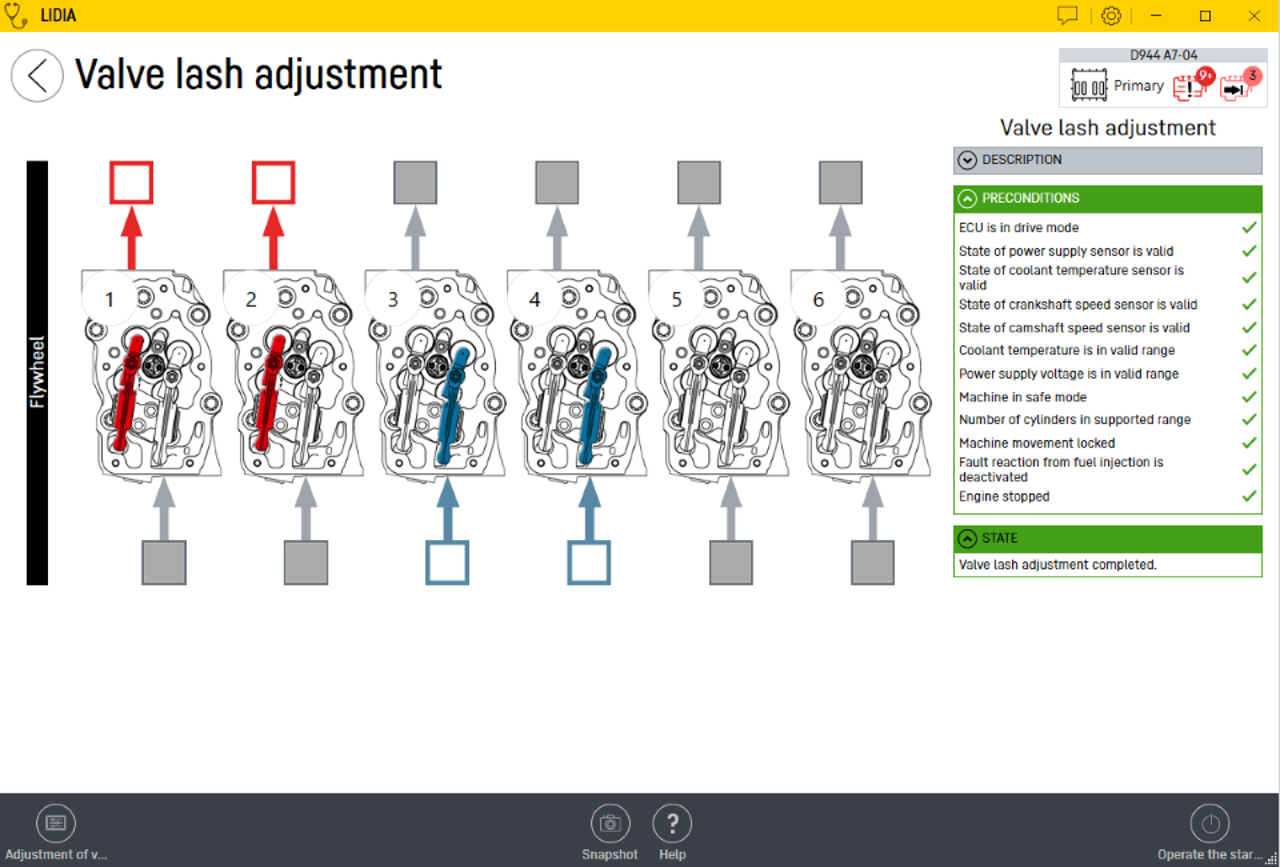
Save time and effort by letting the engine positioning itself so only one technician can adjust the valve lashes.
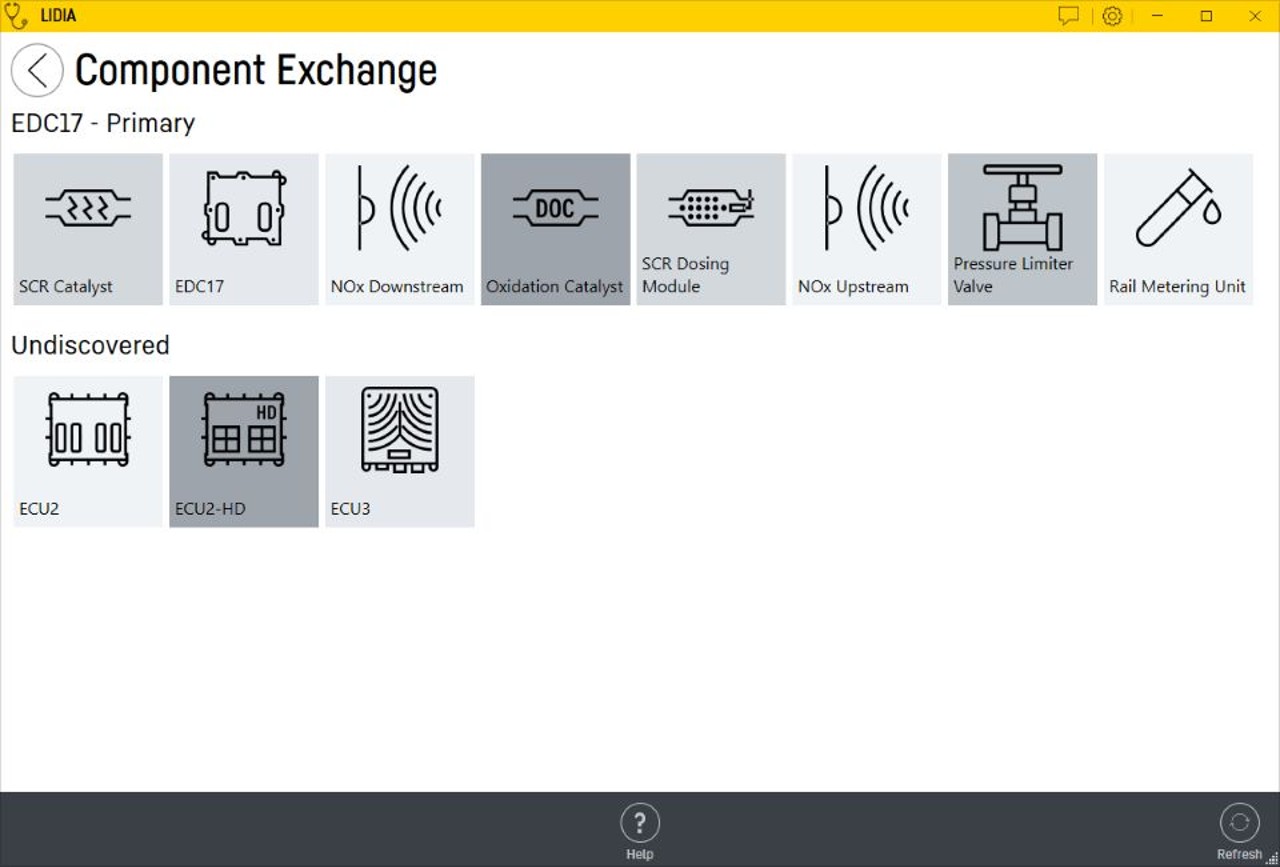
Manage spare parts, reset counters and allow their tracking from history
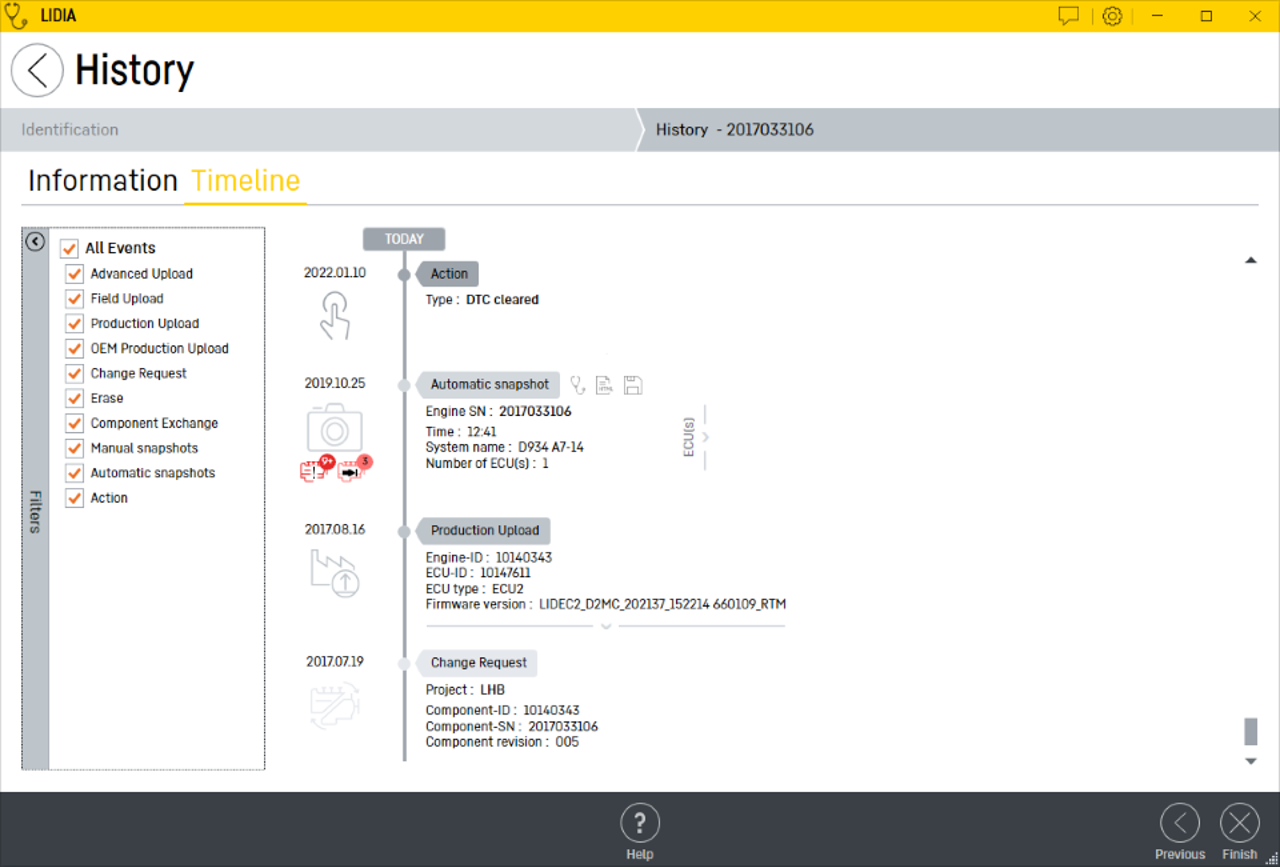
Retrieve information and events applied on your engines
1. Engine Information
Find information about requested engine serial number such as type, volume, certification, etc.
2. Snapshots
Open and get access to all variable, DTC, statistics as if you were the technician connected to the engine at that moment.
3. Filter
Check the desired type of events to easily filter the result.

Diagnosis
Diagnosis
Retrieve many information, configure your engines and run test routines
Update proposal
Obtain and upload automatically the latest available version of the firmware for the whole system.
Current status
Identify quickly if there are active Diagnosis Trouble Codes (DTC)
Diagnosis Trouble Code
List all errors raised by the embedded software, and get access to help full freeze frame information, guide, references and useful schematics to solve the issue.
Common Rail System Dashboard
Maintenance dashboard, and dedicated routines such as click test, cylinder cut off, etc.

DTC
Diagnosis trouble codes (active and passive DTCs) with corresponding details and help content, such as schematics
Get access to troubleshooting content

SCR Dashboard
Launch maintenance routines with easy to understand schematics.
Engine After Treatment System Dashboard depending of your configuration.
Get access to maintenance dashboard, and dedicated routines such as Air system check, DEF filling check, Ventilation check, Deposit cleaning, Coolant heating test.

Statistics
Helpful engine statistics

Valve lash adjustment
Save time and effort by letting the engine positioning itself so only one technician can adjust the valve lashes

Component Exchange
Manage spare parts, reset counters and allow their tracking from history

History
Retrieve information and events applied on your engines
1. Engine Information
Find information about requested engine serial number such as type, volume, certification, etc.
2. Snapshots
Open and get access to all variable, DTC, statistics as if you were the technician connected to the engine at that moment.
3. Filter
Check the desired type of events to easily filter the result.
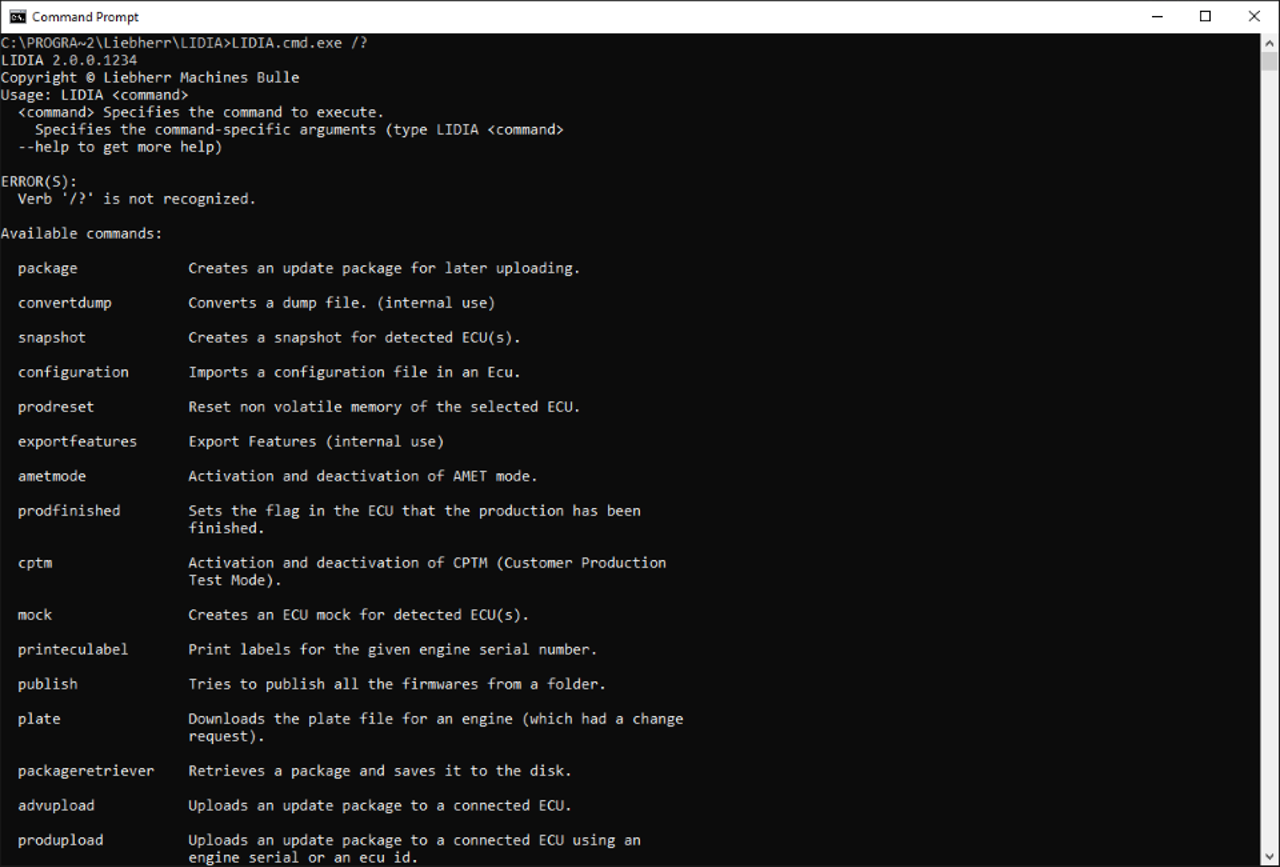
Automation
Pilot LiDIA using command line and integrate it in your system
First steps
MyLiebherr
Discover how it works (This is an example of a video integration)
Want to know more?
Contact our sales team via [email protected] or follow us on our Linkedin channel.
